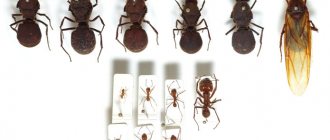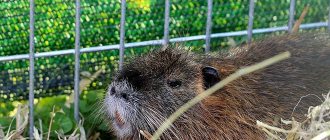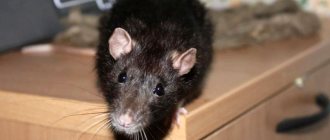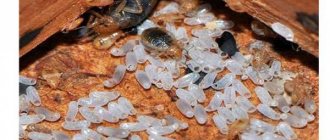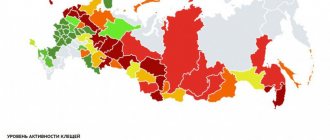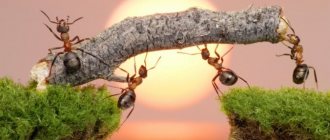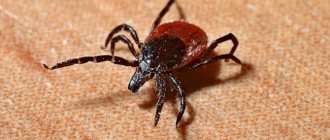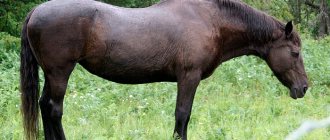The Brazilian wasp gained worldwide fame after scientists from Brazil and the USA published information that the venom of the Brazilian wasp kills cancer cells. Insects belong to the subfamily of common wasps, paper wasps, and social wasps. The most numerous, extensive family in terms of the number of species. The venom of the Brazilian wasp Polybia paulista contains a unique peptide, Polybia-MP1 (MP1), which can destroy some cancer cells.
Brazilian wasp: description and photo
This is what she is, the Brazilian wasp.
If it stings, it won’t seem too bad to anyone. Polybia paulista, or the Brazilian wasp, is a type of social paper wasp, meaning it lives in groups rather than alone, and builds nests from plant fibers. They live in South America - in Paraguay, Argentina and Brazil (mostly here, especially in Sao Paulo).
The number of Brazilian wasp colonies ranges from 4.5 to 13 thousand individuals. Up to three colonies can peacefully coexist on one territory. Unlike bee families, they have many queens (10-100 pieces), and they get along well together. When mating, the queen of the Brazilian wasp stores sperm inside and uses it when she needs to fertilize the eggs. During the hatching of the larvae, all construction work is stopped in order to use all resources for the young animals. Working individuals fly out already on the 6th day after hatching.
The Brazilian wasp has a division of labor according to age - the riskiest work goes to the oldest members of the family. Different groups of wasps build the nest, collect food, raise their young, and protect the nest from predators and parasites. Brazilian wasps fly to collect food at temperatures ranging from 19.5 to 37°C. The higher the temperature, the more wasps fly to get food. Not so much food as water to cool the nest, since worker wasps cannot cope with flapping their wings alone.
Wasps also collect plant fiber to repair the hive, usually in August-September and December-January. The larvae are fed animal protein, they themselves feed on carbohydrates, and they prefer cacti to all plants.
It would seem that they are ordinary, unremarkable insects, with the exception of some properties of the venom of the Brazilian wasp. Unlike the venom of ordinary wasps we are all familiar with, it is truly medicinal and not just irritating.
Biology
The biology of polystines is very diverse. Some species (for example, representatives of the genus Polistes) have very primitive behavior. Polists build a nest in the form of a single open honeycomb; the number of wasps in such nests is small - from 10-15 to a little more than 100 wasps. Polistes nests are often founded by a single female (or less commonly by a group of females). Others (for example, wasps of the genus Polybia) are characterized by very complex behavior. Polybia build complex nests, with many layers of honeycombs. These nests are often home to thousands of active worker wasps, and new nests are founded in swarms. In addition, representatives of this subfamily also hold the record for the number of wasps in one colony: for example, Agelaia vicina (South America) can have more than 1,000,000 wasps in one nest.
According to the type of founding of new colonies, two groups are distinguished: independent founding by one or a group of females without the participation of working individuals (Polistes, Mischocyttarus, Belonogaster, Parapolybia, and part of the Ropalidia species) or budding by swarming (about 20 genera of the tribe Epiponini, genus Polybioides, part of the Ropalidia species ).
In the tribe Epiponini, a wide range of variants of queen-worker dimorphism is observed:
- The absence of morphological differences between queens and workers throughout the life cycle of the colony (Parachartergus smithii, Pseudopolybia vespiceps, Chartergellus communis, Brachygastra lecheguana).
- No morphological differences between castes, but some young females develop ovaries only during some phases of the colony cycle (Synoeca cyanea)
- There are morphological differences between castes, varying during the colonial cycle, with unfertilized oviparous females in the final period of the colonial cycle (Protopolybia exigua and Protopolybia sedula)
- Caste differences increase during the colonial cycle with unfertilized females appearing only during some phases of colony development (Chartergus globiventris, Polybia scutellaris, Polybia occidentalis, Polybia paulista, Protonectarina sylveirae, Epipona guerini)
- Queens always differ from workers, and these differences do not vary during the life of the colony (Agelaia areata, Agelaia vicina, Agelaia pallipes, Agelaia multipicta, Apoica flavissima, Apoica pallens, Polybia dimidiata).
Features of the action of the venom of the Brazilian wasp
Low-molecular compounds of the Polybia paulista poison had an anticonvulsant and sedative effect in bioassays, so they can be used to treat epilepsy. Also of scientific interest are 3 peptides from the venom of the Brazilian wasp:
- The Polybia-CP peptide triggers the production of insulin in beta cells (these are pancreatic cells).
- Mastoparans MP-I and -II are a powerful antimicrobial substance that, for example, suppresses all known pathogens of Chagas disease.
Note: Chagas disease is transmitted by tropical bedbugs (mainly in South America) and causes fever, headache, swollen lymph nodes, and sometimes leads to heart failure.
MP-1 peptide also kills gram-negative and gram-positive bacteria, that is, pathogenic bacteria with permeable cell walls and bacteria with double membrane and resistance to antibodies. At the same time, it does not destroy red blood cells (blood cells), is not toxic to cells, does not block or inhibit healthy cells.
But these are still flowers. The discovery of the unique properties of the venom of Brazilian wasps took place in 2015. It turned out that this peptide selectively destroys the membranes of unhealthy cells such as cancer cells, which have a lot of serine (phosphatidylserine - PS - 7-8 times more!) and phosphatidylethanolamine (PE) on the outer layer. In healthy cells, these lipids are located inside, so the MP-1 peptide does not affect them.
Damage in membranes with different lipids 2 hours after soaking in a lipid solution. The latter is an ordinary healthy cell, there is no damage in it.
Alternative method
In the near future, scientific developers plan to study in great detail the effect of wasp venom peptide on cancer-affected cell membranes. They want to multiply this healing effect. To create a powerful cancer cure and a new form of safe anticancer drugs from the venom of the Brazilian wasp. This will greatly benefit patients suffering from cancer.
An alternative method of quality treatment in the fight against cancer will be an excellent addition to methods such as radiotherapy and chemotherapy, which kill not only cancer-affected areas, but also completely healthy cells.
Effectiveness of Brazilian wasp venom
Why are holes in the cellular structure so scary? Because the cell is destroyed, that is, it ceases to exist. Its contents simply flow out and are destroyed by the body as waste, because it is no longer protected by an impenetrable barrier, does not send false signals to the immune system and cannot escape through the circulatory system.
Leakage of the contents of the malignant cell membrane after treatment with the peptide after 12-25 minutes
A group of scientists led by Paul Beals from the University of Leeds (UK) conducted an experiment: they simulated membranes with different lipid ratios and treated them with a solution of MP-1 peptide. The experiment was observed from 30 minutes to 2 hours on different equipment. Some cells perforated immediately, others within 10 seconds to several minutes. Complete leakage of the contents occurred within half an hour.
It would seem that the ideal algorithm for fighting cancer! Only diseased cells are destroyed, and healthy ones remain healthy, and do not die, as with chemotherapy! But cancer cells are also different, and their lipid content varies. In the course of further experiments, it was confirmed that wasp venom acts on cancer-infected prostate and bladder cells, as well as on affected leukemic cells of the thymus lymphocytes. Thus, the venom of the Brazilian wasp will help in the fight against prostate, bladder and blood cancer (leukemia) - but only after it has been tested to ensure that the venom is harmless to the entire body.
The mechanism of cancer destruction
Molecules of a toxic substance stick to diseased cells 8 times more often than to healthy tissues. Pores or holes are created on the surface of the tissue, which allow the internal contents of the membrane to flow out. The more killer cells, the higher the therapeutic effect. The poison can kill cancer in a matter of days.
Important!
Officially, medicine has not yet developed special drugs for humans based on the venom of the Brazilian wasp or its synthetic analogues. However, scientists hope that their discovery will become the basis for creating an effective cure for cancer in the future. The advantage of this medication is the absence of side effects and safety for healthy tissues.
Wasp secretion is actively sold through websites on the Internet; the price of Brazilian wasp venom is quite high.
Preparations based on Brazilian wasp venom
Ready-made medications have not yet been created, since the mechanism of action of the Brazilian wasp venom was discovered only in 2015, and has not even reached the stage of clinical trials.
One reason is that it is not the entire poison that cures, but a peptide that is not easy to extract:
- Brazilian wasps are frozen and stored at −20 ◦C.
- The venom reservoirs are removed using microsurgical scissors and washed with a solution of acetonitrile and water containing 0.1% trifluoroacetic acid to dissolve the peptides.
- The extract is then purified in a centrifuge at 8000 × g for 15 minutes at 4°C.
- The supernatant (formed on top as a result of settling) is collected for further purification of the peptide.
- It is chromatographed under special conditions for an hour, then dried in a lyophilizer and chromatographed again, but with a reverse phase.
Not an easy process, right? As a result, the medicinal substance turns out to be barely one hundredth of the total mass of the poison.
The exact dosage of the poison has not yet been clarified. In one experiment, it was found that at a concentration of 4.5 × 10−5 M the peptide caused the dissolution of 50 microliters of malignant cells. In others, it was discovered that the minimum concentration of the peptide to suppress different infections is different:
- Escherichia coli and Pseudomonas aeruginosa - 8 mu g/mL,
- Bacillus subtilis – 4 mu g/mL,
- Staphylococcus aureus – 15 mu g/mL
Even if you delve into the available studies and calculate the approximate dose from them, it remains unclear how to administer the drug, because during the experiment the peptide acted directly on the membrane - “watered” it. How to ensure such contact in the body if the disease is in the bladder or prostate gland?
How much does it cost and where to buy poison?
However, for those interested, Brazilian wasp venom is sold in its pure form. One more or less certified supplier, the online poison store OESKAM, offers a 5 ml ampoule with 91% liquid poison. Cost - 9000 rubles, delivery from 2 weeks to a month. The ampoule promises instructions for use and storage, but this poison is not publicly available.
In a sober mind and sound memory, I would be careful not to buy something like this on the Internet. What is really in the ampoule - only God knows.
Tested by experience
To test their assumption, scientists conducted experimental studies. To do this, they developed a cell membrane model containing phosphatidylserine and phosphatidylethanolamine. The membrane was exposed to the MP1 peptide. Then they began to observe the effect. Experienced scientists have seen that the presence of the phosphatidylserine component helps the Brazilian wasp venom act on the cell membrane, and the combination of the phosphatidylethanolamine component with wasp venom destroys the upper layer of the cell membrane and makes small microcracks in it. Through such micropores, the affected cell begins to function normally.
Results and feedback on application
There have been no reviews yet from customers about the positive effects of the Brazilian wasp peptide, although they promised to unsubscribe at the beginning of the year. There are 4 reviews on the online store page, but they all say that people bought this ampoule and will use it somehow. We will wait for official clinical trials. Scientists need to prove that the body will not be harmed by wasp poison, or that the benefit will be immeasurably greater. The fight against cancer is a very promising industry and very profitable, so the creation of a cure is unlikely to be shelved.
Classification
The polystinia subfamily is divided into 4 tribes, including 25 genera and more than 800 species.
The genus Euparagia Cresson, 1879 belongs to a separate subfamily Euparagiinae
.
- Polistinae
Tribe Polistini Polistes Latreille, 1802
- Mischocyttarus Saussure, 1853
- Apoica Lepeltier, 1836 [3]
- Belonogaster de Saussure, 1854
